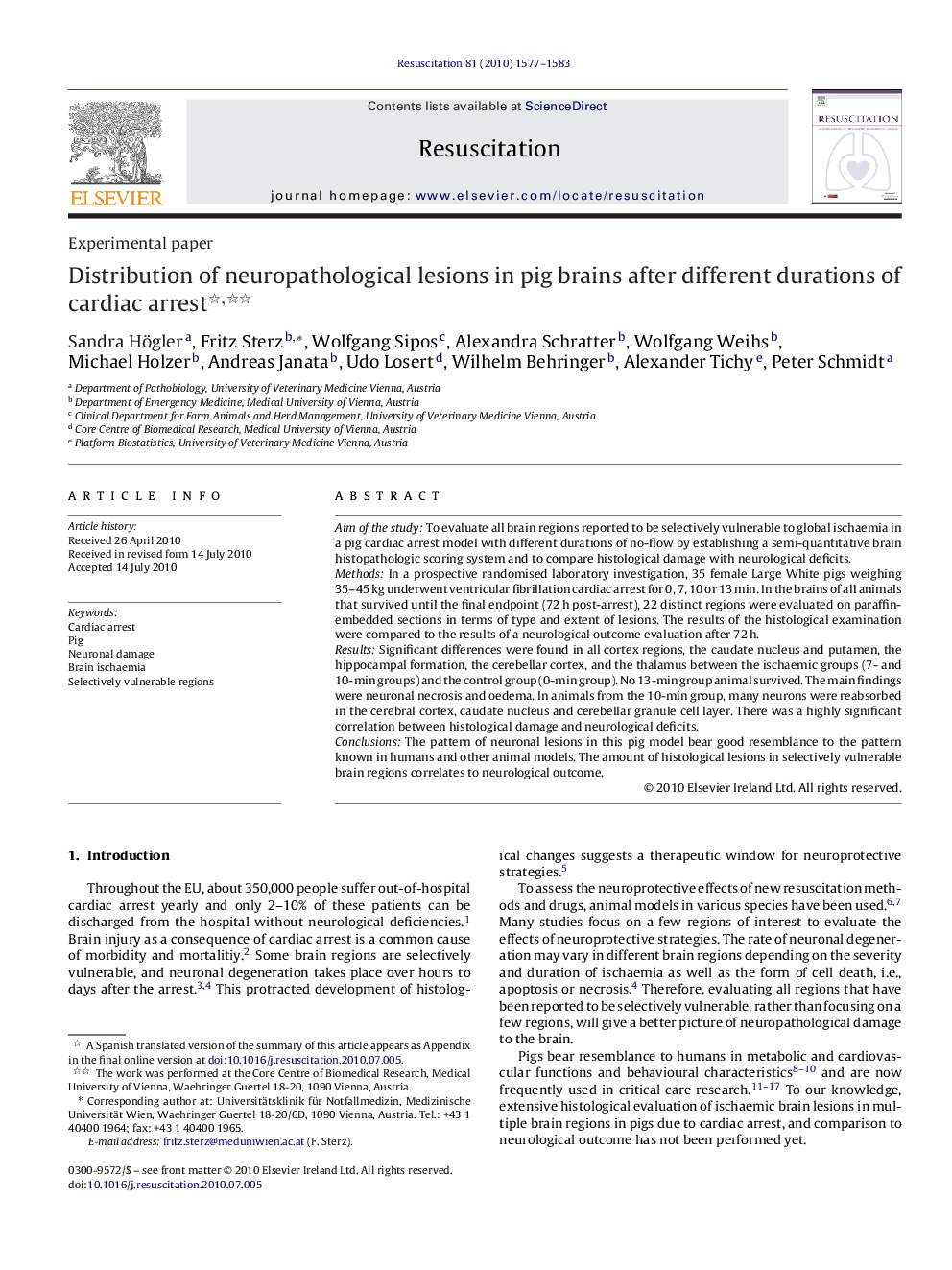| Article ID | Journal | Published Year | Pages | File Type |
|---|---|---|---|---|
| 3009602 | Resuscitation | 2010 | 7 Pages |
Aim of the studyTo evaluate all brain regions reported to be selectively vulnerable to global ischaemia in a pig cardiac arrest model with different durations of no-flow by establishing a semi-quantitative brain histopathologic scoring system and to compare histological damage with neurological deficits.MethodsIn a prospective randomised laboratory investigation, 35 female Large White pigs weighing 35–45 kg underwent ventricular fibrillation cardiac arrest for 0, 7, 10 or 13 min. In the brains of all animals that survived until the final endpoint (72 h post-arrest), 22 distinct regions were evaluated on paraffin-embedded sections in terms of type and extent of lesions. The results of the histological examination were compared to the results of a neurological outcome evaluation after 72 h.ResultsSignificant differences were found in all cortex regions, the caudate nucleus and putamen, the hippocampal formation, the cerebellar cortex, and the thalamus between the ischaemic groups (7- and 10-min groups) and the control group (0-min group). No 13-min group animal survived. The main findings were neuronal necrosis and oedema. In animals from the 10-min group, many neurons were reabsorbed in the cerebral cortex, caudate nucleus and cerebellar granule cell layer. There was a highly significant correlation between histological damage and neurological deficits.ConclusionsThe pattern of neuronal lesions in this pig model bear good resemblance to the pattern known in humans and other animal models. The amount of histological lesions in selectively vulnerable brain regions correlates to neurological outcome.
